SOEST Press Releases 2012
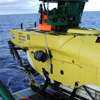 |
Dec 17: HURL receives powerful new storage solution from Intel and HPIntel and HP collaborated to provide HURL with a state-of-the-art data storage solution to manage a vast collection of video, photo, and scientific data, accumulated over decades in an ongoing quest to explore our planet’s oceans. Link to the press release (PDF). |
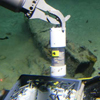 |
Nov 23: SOEST continues to investigate military munitions off Pearl HarborThe Hawaii Undersea Military Munitions Assessment (HUMMA) project, an Army-funded research effort, continues investigations of sea-disposed military munitions south of Pearl Harbor at a deep-water site that is suspected to contain both conventional and chemical military munitions. Link to the press release (PDF). |
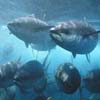 |
Nov 13: Pacific fishing zones – lifeline for overfished tuna?Scientists working at UH, the Secretariat of the Pacific Community and Collecte Localisation Satellites, have found that a a network of marine zones in the Pacific Ocean, in combination with other measures, could significantly improve numbers of heavily overfished bigeye tuna and improve local economies Link to the press release (PDF). |
 |
Nov 11: Groundwater inundation doubles previous predictions of flooding with future sea level riseUHM Scientists showed that besides marine inundation (flooding), low-lying coastal areas may also be vulnerable to "groundwater inundation," a factor largely unrecognized in earlier predictions on the effects of sea level rise. Link to the press release (PDF). |
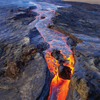 |
Oct 23: Study explains the connection between Hawaii’s dueling volcanoesA new study, which appears in the November issue of Nature Geoscience, finds that a deep connection about 50 miles below Earth's surface can explain the enigmatic behavior of two of Earth's most notable volcanoes, Hawaii's Mauna Loa and Kilauea. Link to the press release (PDF). |
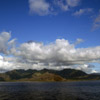 |
Oct 11: Documented decrease in frequency of Hawaii’s northeast trade windsScientists in the Department of Meteorology observed a decrease in the frequency of northeast trade winds and an increase in eastern trade winds over the past nearly four decades, according to a recent study. For example, northeast trade wind days, which occurred 291 days per year 37 years ago at the Honolulu Airport, now only occur 210 days per year. Link to the press release (PDF). |
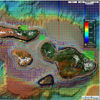 |
Oct 2: PacIOOS ‘Voyager’ released for all U.S. affiliated Pacific IslandsThe Pacific Islands Ocean Observing System (PacIOOS) released a flexible, interactive online mapping platform named ‘Voyager’. Free to the public, this powerful, yet easy-to-use system allows ocean users to dynamically combine, view, download, and query thousands of data layers without the need for proprietary software. Link to the press release (PDF). |
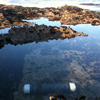 |
Oct 2: Collaboration explores ecosystem's response to ocean acidificationThe OMEGAS (Ocean Margin Ecosystems Group for Acidification Studies) Consortium received a grant of nearly $1.1 million from NSF to analyze the ecological and biological responses of marine organisms to ocean acidification. Margaret McManus, Oceanography Professor, is among the scientists involved in monitoring sites throuhgout the California Current System. Link to the press release (PDF). |
 |
Aug 30: UH SOEST installs new satellite communication facilityA new antenna and satellite downlink system is now operational at the University of Hawaii. This X/L band antenna and dish system follows polar orbiting earth satellites and downloads, in real time, data useful for weather and ocean forecasts as the satellites pass over Hawaii. Link to the press release (PDF). |
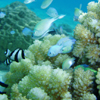 |
Aug 28: Less is more for reef-building coralsResearchers at the Hawaii Institute of Marine Biology (HIMB) made a discovery that challenges a major theory in the field of coral reef ecology. Hollie Putnam, Ruth Gates and colleagues documented that the more flexible corals are with respect to which algae live in their tissue, the less resilient they are -- exactly the opposite of what was expected. Link to the press release (PDF). |
 |
July 23: Scientist confirm existence of vitamin “deserts” in oceanUsing a newly developed analytical technique, David Karl and colleagues from the University of Southern California (USC) and Universidad Autonoma de Baja California were the first to identify long-hypothesized vitamin B deficient zones in the ocean. Zones poor in B vitamins may inhibit the growth and proliferation of phytoplankton, the base of the marine food chain. Link to the press release (PDF). |
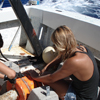 |
May 31: UH Board of Regents approve Marine Biology graduate programThe University of Hawaii (UH) Board of Regents approved, at its meeting last week, the establishment of the first graduate degree program in Marine Biology in Hawai’i. The Marine Biology PhD and Master of Science Program will be jointly administered by SOEST and the College of Natural Sciences (CNS) at UH-Manoa. Link to the press release (PDF). |
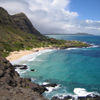 |
May 7: 70 Percent of beaches eroding on Hawaiian Islands Kauai, Maui, and OahuScientists from SOEST and the USGS published an assessment of coastal change over the past century has found 70 percent of beaches on the islands of Kauai, Maui and Oahu are undergoing long-term erosion. Researchers studies over 150 miles of coastline and found the most extreme case of erosion at Kualoa Point on Oahu (nearly 6 feet per year). Link to the press release (PDF). |
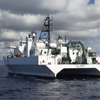 |
May 5: GPS on commercial ships could improve tsunami warningsAfter accurately detecting the February 2010 Chilean tsunami, SOEST reseachers determine thatGPS systems on-board commercial ships could provide better warnings for potentially deadly tsunamis. Link to the press release (PDF). |
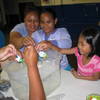 |
Apr 16: C-MORE to host Ocean and Earth Science Career DayC-MORE, in partnership with SEED, and the School of Hawaiian Knowledge, will host a Career Day and Ocean FEST on Staturday, April 21 for middle school, high school, and community college students and their families. Link to the press release (PDF). |
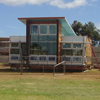 |
Mar 29: HNEI to Conduct Energy Research at Ilima Intermediate School Utilizing New Project Frog ClassroomHNEI worked with California-based Project Frog, Inc. to create a classroom that is, itself, a learning platform. The energy-efficient classroom, powered by renewable energy, provides research data on the performance of design and material components. Link to the press release (PDF). |
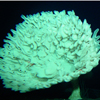 |
Mar 23: Hawai‘i Undersea Research Laboratory Launches Online Deep-Sea Animal Identification GuideHURL has created and built up a knowledge base that is featured in a photo-guide of all the organisms one might encounter in the deep-sea around Hawai‘i. Until recently, that guide was only available to scientists preparing for upcoming dives. Now scientists around the world, as well as the general public, can access HURL’s deepwater animal photo-guide online. Link to the press release (PDF). |
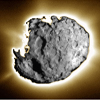 |
Feb 29: Analyses of a Tiny Comet Grain Date Jupiter’s FormationParticles from comet 81P/Wild 2 brought to Earth in 2006 by NASA's Stardust spacecraft indicate that Jupiter formed more than three million years after the formation of the first solids in our Solar System. HIGP researchers say the new finding helps test Solar System formation theories which do not agree on the timing of Jupiter's formation. Link to the press release (PDF). |
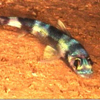 |
Feb 27: Bottom fish in the submarine canyons off Moloka’i are indirectly supported by tree trunks, leaves and kukui nutsOceanography researchers discovered that land-based plant material and coastal macroalgae indirectly support the increased abundances of bottom fish in submarine canyons, like those off the north shore of Moloka’i. Link to the press release (PDF). |
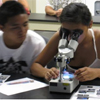 |
Feb 7: Microscopes to Middle Schools program reveals microscopic creatures all around usThe Center for Microbial Oceanography: Research and Education (C-MORE) and partners are offering a new program to distribute digital video microscopes and related supplies (valued at $1775) to Hawaii's DOE middle schools statewide. Link to the press release (PDF). |
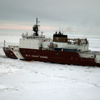 |
Jan 24: CIMES assists U.S. Coast Guard with Nome fuel deliveryResearchers with the Center for Island, Maritime and Extreme Environment Security (CIMES), headquartered at SOEST, have been providing the United States Coast Guard (USCG) Cutter HEALY with critical information about sea ice thickness as the icebreaker leads the Russian tanker Renda on a mission to deliver fuel to Nome, Alaska. Link to the press release (PDF). |
 |
Jan 20: SOEST offers mini-grants to area schoolsTGIF, a social group at the School of Ocean and Earth Science and Technology (SOEST) of the University of Hawaii at Manoa (UHM), will be awarding mini-grants to schools and teachers for supplies or services that can enhance students’ appreciation for ocean and earth science. Link to the press release (PDF). |
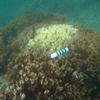 |
Jan 05: Another outbreak of coral disease hits reefs of Kaneohe BayThe disease called acute Montipora White Syndrome (MWS) has reappeared and is again killing corals in Kaneohe Bay, Oahu. The current outbreak has already affected 198 colonies of rice coral (Montipora capitata). A rapid response team led by Dr. Greta Aeby, Assistant Researcher at the HIMB has been activated to document the outbreak. Members of the investigative team include scientists from the UH, HIMB, and United States Geologic Survey (USGS) National Wildlife Health Center. Link to the press release (PDF). |
News archives: 2015 • 2014 • 2013 • 2012 • 2011 • 2010 • 2009 • 2008 • 2007 • 2006 • 2005 • 2004 • 2003 • 2002Press release archives: 2015 • 2014 • 2012 • 2012 • 2011 • 2010 • 2009 • 2008 • 2007 • 2006 • 2005 • 2004 and earlierIf you have news to share, or would like more information about any of the above, please contact:
Mahalo! (Thank you!)
|
|


